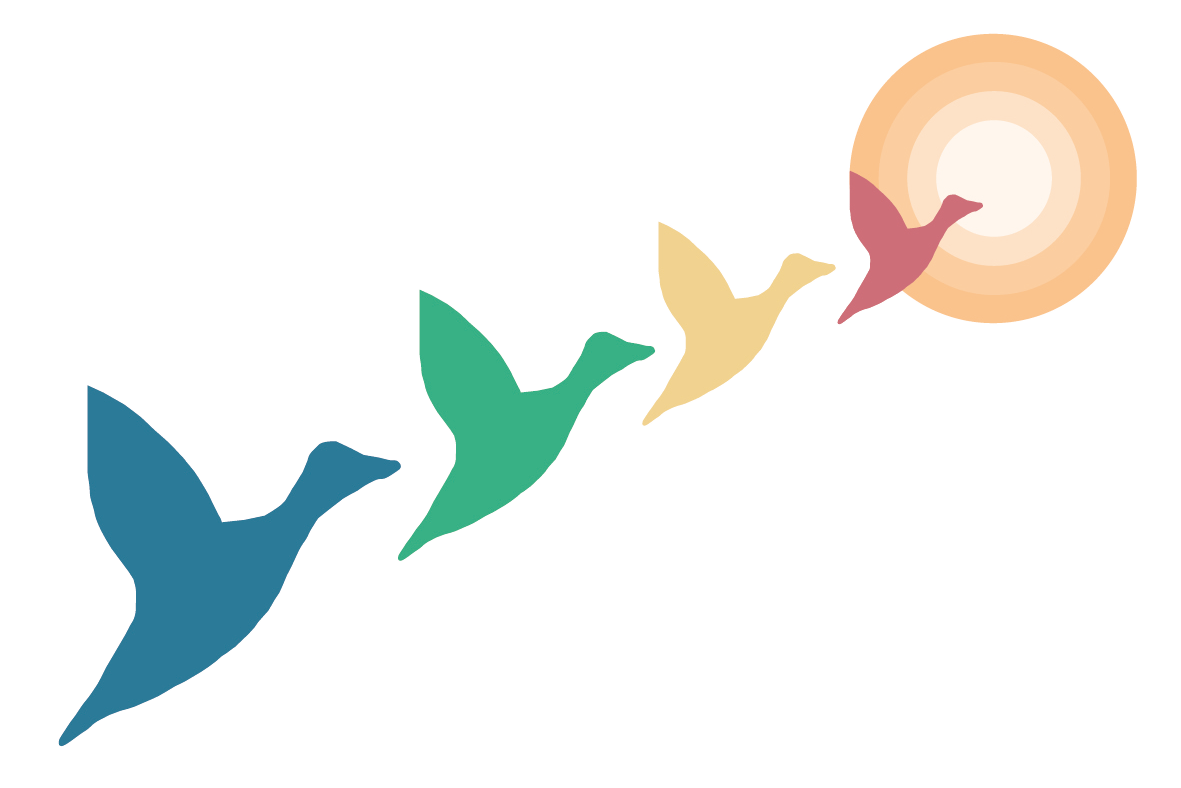With Sarah Glover, Flying Geese Consultant

Introduction
Is a questionnaire or survey always the most appropriate way to gather data for evaluation – especially when you might be working with children and young people, those with complex needs, first-time attendees and those who are often not included in cultural activities?
At Flying Geese we love taking the creative approach and creating bespoke data collection tools for our clients that can gather data before, during and after projects – often becoming an integral part of the project itself.
When it comes to evaluating projects, particularly those involving children, traditional survey methods may not always capture the full extent of their experiences and perspectives. Very young children may not be able to complete a survey at all. We like to stay away from surveys when we can and take the opportunity to gather rich and interesting data in a way that engages and enthuses project participants.
It’s always worth considering alternative approaches and in this blog post, we will explore two exciting methods we developed for our clients, the Playhouse Project and another developed for Junction Arts to evaluate the Chesterfield Children’s Festival
Vox Pops/Vlogs – Giving Children A Voice:
A very effective way to gather data is by facilitating vox pops or vlogs where children respond to fun prompt cards (which we created) or questions from an adult in a video format. This approach offers several benefits:
- Authenticity and Expression: The video format allows children to express themselves naturally, showcasing their personalities and emotions.
- Engagement and Empowerment: Children feel more engaged when given the opportunity to share their perspectives through video, especially if the process is not adult-directed. Older children can film each other and respond to the prompts as they understand them, leading to a sense of empowerment.
- Visual and Verbal Communication: Video captures both verbal and non-verbal cues, allowing for a richer understanding of children’s experiences.
- Accessibility and Inclusivity: Video-based responses can accommodate diverse learning styles, language abilities, and communication preferences.
Using video does come with consent implications and data handling implications too, however, as these are considerations when working with children anyway – we do think that the benefits of the data collected outweigh these administrative considerations.
Classroom Games
Classroom games can serve as dynamic and fun data collection tools, offering a collaborative and interactive opportunity to get snapshot quantitative data about what children think, how they feel and what expectations they have of the project they are participating in. They also provide a way to measure longitudinal change if the games are played at the start and end of the project period. There are ways to use identifiers to enable paired data analysis as well.
For the Playhouse Project, these pre-project classroom games as data collection activities were run by class teachers and acted as a warm-up for a day of acting workshops so the data collection was part of the holistic experience of the day for participating children.
Here’s how they can be valuable:
- Active Participation: Games encourage active engagement, fostering a positive and enthusiastic atmosphere among children.
- Social Dynamics: Classroom games provide insights into group interactions, peer influence, and shared experiences, uncovering trends that may go unnoticed in individual surveys.
- Real-Time Observations: By observing gameplay and discussions, evaluators can gather qualitative data, as well as quantitative data, capturing nuanced information beyond survey responses.
- Skill Development: Games can be designed to target specific skills or knowledge areas, contributing to both evaluation and learning objectives simultaneously.
Beans-in-a-Jar Voting – Making Data Collection Fun and Visual
Beans-in-a-jar voting is a hands-on, visual method that can be particularly effective for younger children. There are real benefits to using this method at outdoor and all-day events where paper and digital surveys can be an imposition and prevent people from engaging with what’s on offer. For events aimed particularly at children, like the Chesterfield Children’s Festival run by Junction Arts, these methods are inclusive of children of all ages and abilities and are empowering as they are able to vote and make their own choices. Another bonus is that this method does not come with complicated consent considerations. Some of the main benefits are:
- Simplified Data Collection: Children participate by placing beans or tokens in jars corresponding to their preferences or responses, making it a tangible and accessible activity.
- Engagement and Gamification: The voting process can be turned into a game-like experience, enhancing children’s interest and motivation to contribute, for example, a bean bag toss where you aim at the bucket that corresponds to your vote.
- Visual Representation: The filled jars provide a visual representation of the data as it is collected, allowing for immediate observation and analysis of trends or patterns. It is also a very open process where participants can see the raw data of evaluation as it is being collected.
- Introduction to Data Literacy: Beans in a jar voting introduces children to basic data concepts, such as counting, comparing, and interpreting visual representations and depending on the outcomes of the project being evaluated, like with classroom games, the activity of voting can form part of the skills development offer provided by the project being evaluated.
The challenges of collecting data when working outdoors at festivals and with young people as well as with people who are not usually engaged with arts and culture do actually provide an exciting opportunity to reimagine data collection as a dynamic and engaging part of your project. By embracing alternative data collection methods, such as vox pops/vlogs, games, beans-in-a-jar voting, or other bespoke methods that fit your circumstances, evaluation projects can gain deeper insights and foster greater engagement with the offer itself and with your evaluation activities. These methods can tap into children’s (and people of all ages’) natural inclination for hands-on experiences, enhancing the quality and richness of the data collected. If you’re planning your next project, think about how you can consider your evaluation from the beginning and incorporate these less traditional approaches to ensure a holistic understanding of all your participants’ perspectives, needs, and experiences.
Just remember, the transformation happens when you adapt the data collection methods to suit the unique context of your project and the age group or access needs of the people involved. Using alternative approaches has the potential to valuable insights that empower both the organisation and the project participants themselves – the evaluation might just add a fun element to your offer that you wouldn’t have considered otherwise! If you’d like to talk about your next project and how we can help set you up for a successful and engaging evaluation process, get in touch.
